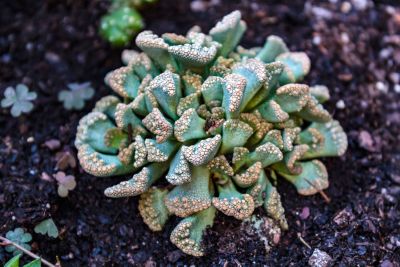Concrete Leaf Succulent Info
The concrete leaf plant (Titanopsis calcarea) is a succulent native to the Western Cape province of South Africa. It grows in a rosette pattern of gray to blue-green leaves. The tips of the leaves are covered in a rough, dense, bumpy pattern that ranges in color from white to red to blue, depending upon the variety. The result is a plant that looks remarkably stone-like in appearance. In fact, its name, calcarea, means “limestone-like”. This is likely no accident, as the concrete leaf succulent grows naturally in the crevices of limestone outcrops. Its stony appearance is almost definitely a defensive adaptation meant to trick predators into mistaking it for its surroundings. In late autumn and winter, the plant produces striking yellow, circular flowers. While they detract a bit from the camouflage, they are really beautiful.
Titanopsis Concrete Leaf Plant Care
Growing concrete leaf plants is relatively easy, as long as you know what you’re doing. In the growing period of late fall and early spring, they do well with moderate watering. The rest of the year they can tolerate a decent amount of drought. Very well-draining, sandy soil is a must. Sources vary on the plants’ cold hardiness, with some saying they can tolerate temperatures as low as -20 F. (-29 C.), but others claiming only 25 F. (-4 C.). The plants are much more likely to survive a cold winter if their soil is kept completely dry. Wet winters will do them in. They like some shade in summer and full sun in the other seasons. If they receive too little light, their color will steer toward green and the stony effect will be lost somewhat.
